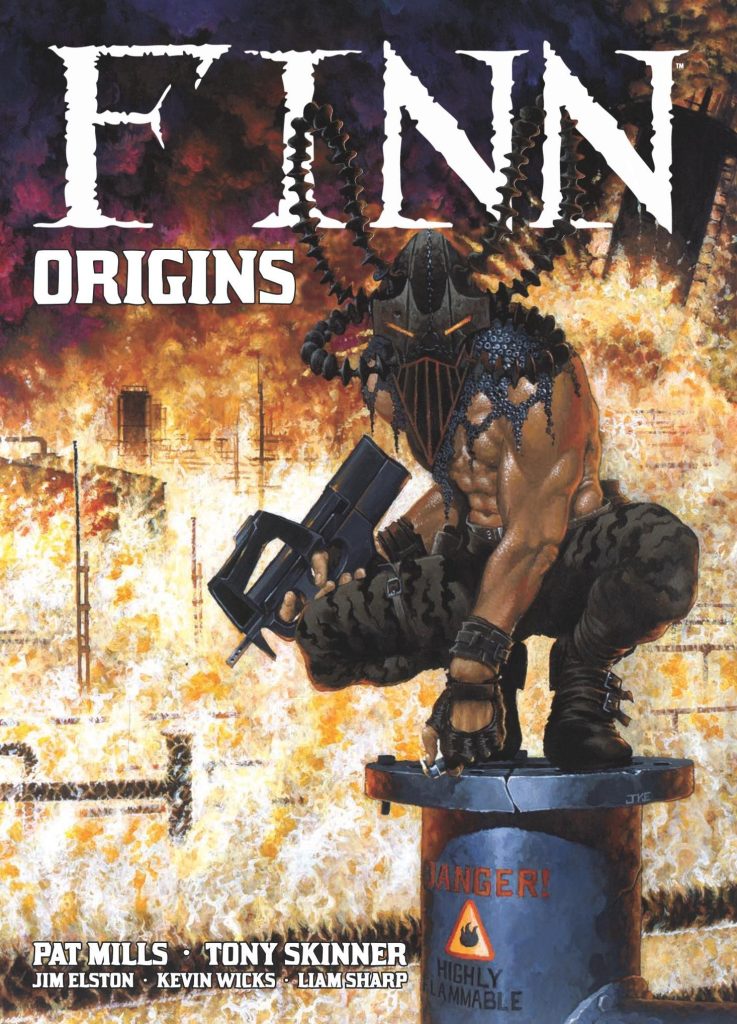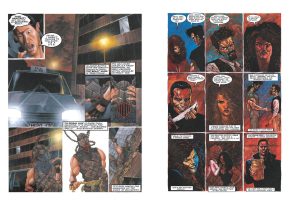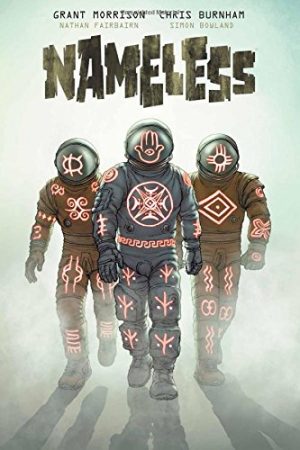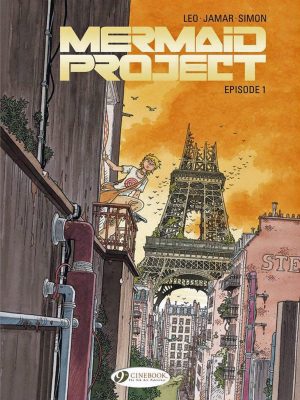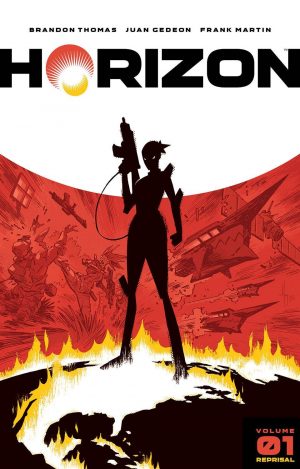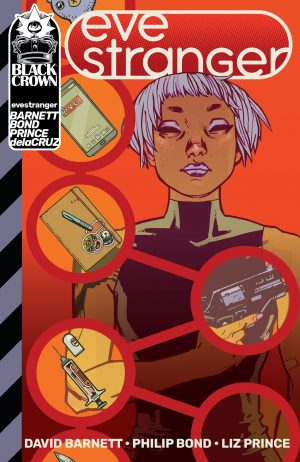Review by Ian Keogh
Finn originated in Third World War, a satirical action series set in the near future with a point to make about creeping corporatisation and military conscription to enforce their ideals. Finn himself was established as an eco-terrorist with an anti-corporate agenda, and that’s broadened in these stories to portray some corporations as acting out the orders of an ancient evil that emerged from the sea and want to pull humanity back under their control. Finn is set against them by the priestess of his occult cult, amusingly named Mandy by co-writers Pat Mills and Tony Skinner.
Mixing the ordinary and down to Earth with ancient myth is a series trademark, along with humorous asides, some of which stand the test of time better than others. Still, it’s documented beyond Mills’ introduction that Finn was for a while 2000AD’s most popular feature, ranking higher than both Judge Dredd and Slaine, with which there are similarities in both subject matter and tone.
Mills and Skinner delight in maligning the suits of the 1990s, having them indulge in preposterous freemasonary rituals designed to humiliate, and these are delivered with just enough of a straight face by Jim Elston, who draws two-thirds of the book. Although Finn’s distinctive mask was designed by Angela Kincaid, Elston gives it a horrific stature, and while a new artist at the time with all that entails, the designs, talent and enthusiasm make up for the odd misproportioned face. Elston improves as he paints more pages, and has a large repertoire of grumpy old men.
The mask alone goes a long way to cementing Finn as a thrilling character, the type of reckless and confident daredevil we’ve all wanted to be at some stage, and because the corporate sociopaths he’s pitched against are so reprehensibly evil, there’s a delight in seeing them get theirs. It’s a formula cinema successfully mined during the 1990s, and transfers efficiently to Finn, which is essentially an action thriller plot mixing technology with supernatural intrusions.
The sequence best typifying the early thrills begins with a show of appalling weapons being used on captured protesters as Finn heads toward their corporate captors, and then seeing him subvert what he knows is a trap with joyful ease. During that we’re introduced to someone keeping tabs on Finn, yet after their prolonged build-up their rapid dispatch is disappointing.
Elston’s future was in game art, not comics, so Liam Sharp paints the final story. It’s very awkward, with flashes of the talent Sharp would later become, but unbalanced, with too much consideration given to impressing with the page design, and not enough applied to the basics of figures, faces and storytelling. Simon Bisley is a big influence in that respect, and Sharp also has an interesting awareness of colour.
There are thrills to be had with Finn, but what a collection highlights is a reliance on the same plot of stalking and revenge over and over, with the mystical aspects too often providing a last second escape. The origin story messes a little with the formula, but features some frankly unconvincing male fantasy attitudes toward women. A second dose of Finn follows in Season of the Witch.
